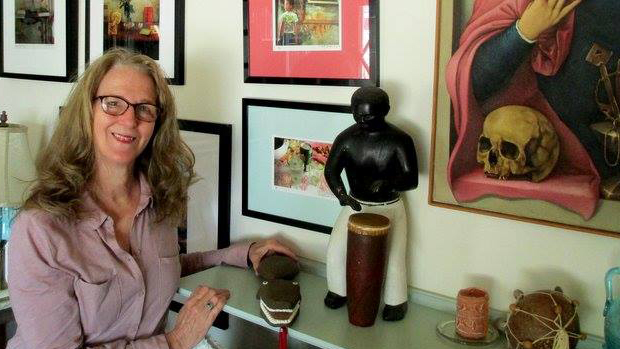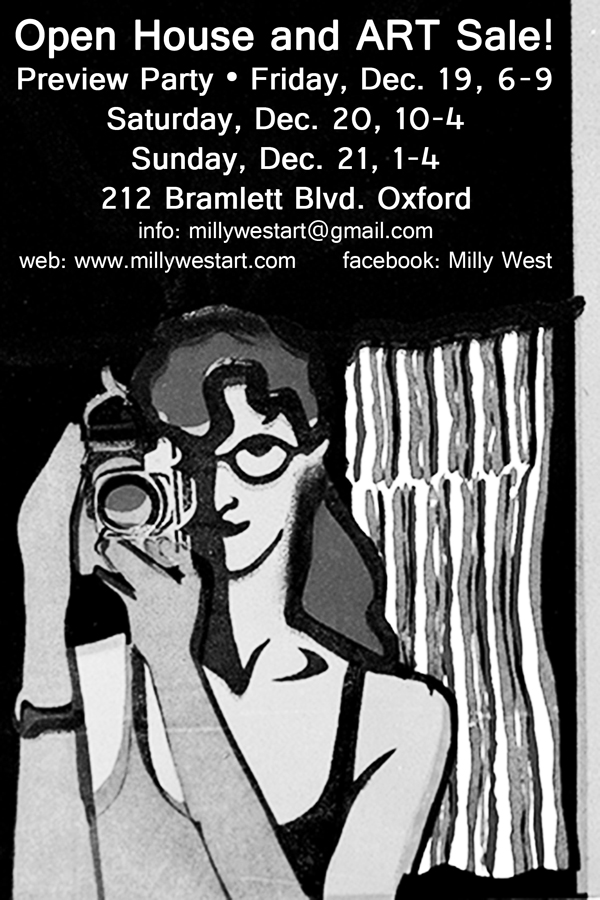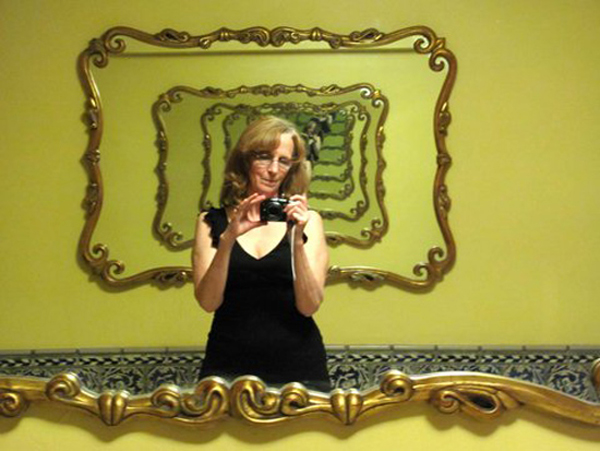
 Photographer Milly West will host an open house and art show at her home Saturday, December 20 from 10 am – 4 pm, and Sunday, December 21, from 1 – 4 pm. A preview party will be on Friday night from 6 – 9 pm. The show will feature photographs from her recent book Cuba for Keeps as well as “lots” other art from her collection.
Photographer Milly West will host an open house and art show at her home Saturday, December 20 from 10 am – 4 pm, and Sunday, December 21, from 1 – 4 pm. A preview party will be on Friday night from 6 – 9 pm. The show will feature photographs from her recent book Cuba for Keeps as well as “lots” other art from her collection.
We at The Local Voice wanted to run a story on the show and also about West as a photographer, and she suggested that we run an interview she did in the spring with writer Catherine Kirk of Delta State University. Below is a segment of the interview which ran in the Delta Statesman prior to her exhibit and talk at DSU.
What initially got you interested in taking photographs in Cuba?
 I take photos everywhere. Going to Cuba was magic though. In 1995, I felt stagnant in my work. Though I owned Southside Gallery (in Oxford), I was a dealer more than an artist. I was living a full life, but not working enough with my photography. When my friend Bill Dunlap was in the gallery one day, I mentioned to him (for some reason) that I wanted to go to Cuba. He put me in touch with Olga Hirshhorn who in turn put me in touch with Sandra Levinson and The Center for Cuban Studies (in New York) and within two or three months, the moment I arrived in Cuba, I began to understand what I had been missing. Cuba was alive with color, art, kind people, and music. I knew I was going to be coming back.
I take photos everywhere. Going to Cuba was magic though. In 1995, I felt stagnant in my work. Though I owned Southside Gallery (in Oxford), I was a dealer more than an artist. I was living a full life, but not working enough with my photography. When my friend Bill Dunlap was in the gallery one day, I mentioned to him (for some reason) that I wanted to go to Cuba. He put me in touch with Olga Hirshhorn who in turn put me in touch with Sandra Levinson and The Center for Cuban Studies (in New York) and within two or three months, the moment I arrived in Cuba, I began to understand what I had been missing. Cuba was alive with color, art, kind people, and music. I knew I was going to be coming back.
Have there been any experiences you’ve had that have changed you or your photography in any way?
Good question. Yes. During certain times of feeling less than energetic, or being conflicted, going through sadness or whatever might be happening in life, I find my work tends to still life interiors or the Southern landscape with architectural elements. I love imagining who built that house or church, who tilled that soil or planted that tree.
Lately, I am saddened by the destruction of our ecosystems and trees by developers and find myself documenting the barren wasteland of scraped soil that once was a forest. This type of work though is not appealing to anyone, the images only bring anger, yet they need to be seen.
Have there been other areas and cultures that you have photographed?
The American South and Cuba are my main focus.
I do know you have taken pictures in the Delta, and with that, what similarities have you found?
The similarities are in the people, the warmth and openness, the hard working people who are often marginalized here in Mississippi are waiting on something to change. Education is a priority for everyone in Cuba and the literacy rates are much higher there. If we in the South could make sure everyone has the opportunity to read, write, learn, and if we have the patience and determination to make it happen, we would all be better for it.
Is there a particular message or theme you are trying to get across with your work?
Good photos tell good stories. From the tableaux in the Cuban homes to the faces of people I meet here and in Cuba, the message should be that there is a lot of living going on and the challenge is for us to explore what we don’t understand. Otherwise, we accept only what we are taught and miss out on a lot of what life can offer.
How did the title, Cuba For Keeps, come about for your upcoming exhibit?
I was working on the title with a friend who traveled with me, Cindy Ray Grant. I suggested Cuba forever, but it was more than that simplistic phrase. Once you are there, if you get to know the people, you keep something of what you have experienced. It stays with you. Once she said the words, Cuba for Keeps, I knew that was the perfect title. Everyone who buys a book here makes it possible for someone in Cuba to have a copy. All profits are being given to victims of Hurricane Sandy in Santiago de Cuba.
***
“I have had a great year,” West told TLV, “winning the Arts and Letters Award in photography then being chosen for the Mississippi Invitational. I am humbled and certainly truly honored.”
West is currently working on a project with David Rae Morris entitled Clarksdale 1985. In January of that year, Morris and West met in Clarksdale and spent an entire day together taking photos. “Bill Ferris put us together,” said West. “He knew I was working in Clarksdale, and David Rae wanted to photograph the Delta. So we just met there. I shot color and David Rae shot black and white. Finally, thirty years later, we are having an exhibit of those photos. We’ll let everyone know the details, but it looks like it will be late January, at the old Greyhound Bus terminal in Clarksdale.”


